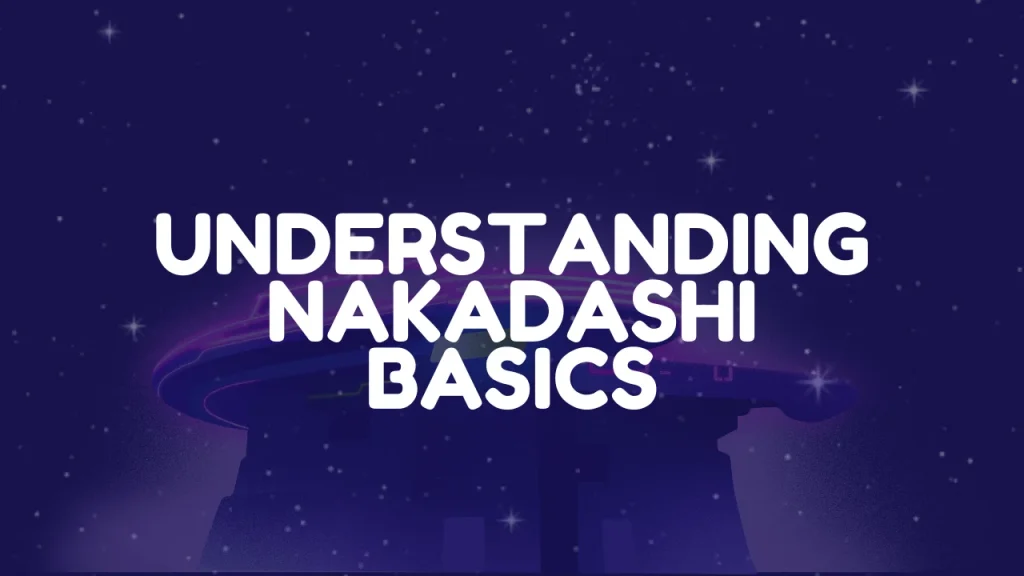You’re scrolling through anime forums or chatting with friends about Japanese culture, and suddenly, the term “nakadashi” pops up. Maybe you’re curious, maybe you’re confused, but you definitely want to know: What is nakadashi? Don’t worry—I’ve got you covered. In this guide, I’ll break down the meaning of nakadashi, its cultural context, and why it’s a term you need to handle with care. From Japanese slang to anime culture, you’ll walk away with a clear understanding of this bold term and its place in modern Japan.
In my experience, diving into Japanese slang is like opening a window into a vibrant, sometimes surprising world. Let’s explore nakadashi and related terms like kyokai, kosei, and JK, so you can navigate these conversations like a pro.
Understanding Nakadashi Basics

Nakadashi is a Japanese slang term that’s both specific and sensitive. To grasp its meaning, you need to know its roots, usage, and the cultural lens it’s viewed through. Let’s unpack it step by step.
Nakadashi Definition
Nakadashi literally translates to “inside release” in Japanese. It’s a term rooted in adult contexts, often referring to a specific act in intimate relationships. The word combines “naka” (inside) and “dashi” (release). While it’s straightforward in meaning, its usage is niche and tied to adult entertainment, particularly in anime and manga.
Origins of Nakadashi
The term emerged from Japan’s adult industry, gaining traction in media like hentai (adult anime). It’s not a word you’d hear in everyday conversations or polite settings. Instead, it’s slang that thrives in specific online communities or fan discussions. Understanding nakadashi means recognizing its boundaries—it’s not casual slang like “cool” or “awesome.”
Nakadashi Pronunciation
Pronouncing nakadashi is simple: nah-kah-dah-shee. Stress the first syllable lightly, and keep the vowels short. If you’re learning Japanese, practicing slang like this can help you sound more natural, but use it wisely—context matters.
Cultural Sensitivity
Nakadashi is a bold term, and in Japanese culture, discretion is key. Using it carelessly, especially in public or with strangers, can offend. If you’re an anime fan or studying Japanese, knowing the term’s weight helps you avoid awkward moments. Think of it as a cultural red flag—tread lightly.
Nakadashi in Media
You’ll often spot nakadashi in adult anime, manga, or online forums. It’s a term fans might discuss when analyzing hentai genres or tropes. But outside these spaces, it’s rarely mentioned. This divide shows how Japanese slang can be hyper-specific to certain subcultures.
Nakadashi in Japanese Culture
To fully get what is nakadashi, you need to see it through the lens of Japanese culture. Slang like this doesn’t exist in a vacuum—it’s shaped by media, societal norms, and even language trends. Let’s dig into how nakadashi fits into the bigger picture.
Japanese Slang Overview
Japanese slang is a colorful mix of playful, regional, and subculture-specific terms. From casual phrases like “yabai” (awesome or terrible) to niche terms like nakadashi, slang reflects Japan’s dynamic language. What is Japanese slang for? It’s a way to express identity, connect with peers, or push cultural boundaries.
Nakadashi and Anime Culture
Anime and manga are global phenomena, and with them come unique slang terms. Nakadashi is tied to hentai, a subset of anime that’s strictly for adults. Fans use it to describe specific scenes or themes, often in online discussions. If you’re new to anime slang, nakadashi is a term you’ll encounter in mature contexts.
Social Context of Nakadashi
In Japan, discussing adult topics openly is taboo. Nakadashi, as a term, stays confined to private or online spaces. Using it in casual settings would raise eyebrows, much like discussing explicit topics at a family dinner. Knowing this helps you respect cultural norms.
Nakadashi vs Other Slang
How does nakadashi compare to other Japanese slang? Unlike neutral terms like “JK” (short for joshi kosei, meaning high school girl), nakadashi is explicit. It’s not a term for lighthearted chats. Understanding these differences helps you navigate Japanese slang with confidence.
Cultural Nuances
Japanese culture values subtlety, so slang like nakadashi stands out for its bluntness. It’s a reminder that even in a reserved society, subcultures can be bold. If you’re studying Japanese or exploring anime, these nuances add depth to your learning.
Table: Common Japanese Slang Terms
| Term | Meaning | Context | Usage |
| Nakadashi | Inside release | Adult anime, hentai forums | Explicit, niche |
| JK | High school girl | Casual, anime, social media | Playful, common |
| Yabai | Awesome or terrible | Everyday conversations | Versatile, youth slang |
| Kyokai | Boundary or association | Formal, cultural discussions | Neutral, less common |
| Kosei | Individuality, personality | Personal growth, education | Positive, motivational |
Related Japanese Slang Terms
Nakadashi isn’t the only slang term you’ll encounter in Japanese pop culture. Let’s explore related terms like kyokai, kosei, and JK to give you a broader understanding of Japanese colloquialisms.
What Is Kyokai in Japanese?
What is kyokai in Japanese? Kyokai means “boundary” or “association,” depending on context. It’s not slang but a formal term used in discussions about limits, organizations, or cultural groups. Unlike nakadashi, kyokai is neutral and safe for all settings. You might hear it in talks about community or tradition.
What Is Kosei in English?
What is kosei in English? Kosei translates to “individuality” or “personality.” It’s a positive term often used in education or self-improvement contexts. For example, a teacher might praise a student’s kosei for their unique talents. It’s a far cry from nakadashi’s explicit nature but shows the range of Japanese language.
What Is a JK in Japanese Slang?
What is a JK in Japanese slang? JK stands for joshi kosei, or high school girl. It’s a popular term in anime, manga, and social media, often used playfully. JK is lighthearted and widely accepted, unlike nakadashi. You’ll see it in memes or casual chats among fans.
Comparing Slang Usage
Each term has its place. Nakadashi is niche and adult-focused, JK is youthful and fun, kyokai is formal, and kosei is uplifting. Knowing these distinctions helps you use Japanese slang appropriately, whether you’re chatting online or visiting Japan.
Why Slang Matters
Slang like nakadashi, JK, or kosei reflects Japan’s cultural diversity. It shows how language evolves with media, youth culture, and societal shifts. For anime fans or language learners, mastering slang is a fun way to connect with Japan’s vibrant subcultures.
Nakadashi in Anime and Media
Nakadashi’s prominence in anime and media makes it a term worth understanding, especially if you’re deep into Japanese pop culture. Let’s explore how it’s used and why it matters.
Nakadashi in Hentai
Hentai, or adult anime, is where nakadashi shines. It’s a specific descriptor for scenes or genres, often discussed in fan communities. If you’re browsing anime forums, you might see nakadashi mentioned alongside other niche terms. It’s a hallmark of adult content but not mainstream anime.
Online Discussions
Anime fans love dissecting terminology, and nakadashi is no exception. On platforms like Reddit or X, you’ll find threads explaining what does nakadashi mean in Japanese. These discussions highlight its role in hentai and its cultural weight. Joining these talks can deepen your anime knowledge.
Media Boundaries
Nakadashi stays within adult media for a reason. Mainstream anime, like Naruto or Demon Slayer, avoids such terms to appeal to wider audiences. This divide shows how Japanese media balances family-friendly content with adult subcultures.
Fan Communities
Anime fan communities are diverse, and nakadashi is a term for specific groups. If you’re new to hentai or adult manga, understanding slang like this helps you navigate forums without feeling lost. It’s like learning the lingo of any fandom.
Cultural Impact
Nakadashi’s presence in media reflects Japan’s complex relationship with adult content. While hentai is popular, it’s kept separate from mainstream culture. This balance shapes how terms like nakadashi are perceived and used.
Table: Anime Slang Terms
| Term | Category | Usage Frequency | Audience |
| Nakadashi | Adult anime | Niche, specific | Adult fans |
| JK | General anime | Common, widespread | Teens, young adults |
| Senpai | School anime | Very common | All ages |
| Tsundere | Character trope | Common | Anime fans |
This table shows nakadashi’s niche role compared to broader anime slang.
How to Use Nakadashi Safely
Using nakadashi or any sensitive slang requires caution. Here are five actionable tips to help you navigate this term like a pro.
Five Actionable Tips
- Know the Context: Only use nakadashi in adult anime discussions or private settings. Avoid it in casual or public conversations.
- Respect Cultural Norms: Japanese culture values discretion. Using nakadashi inappropriately can offend or alienate others.
- Stick to Relevant Spaces: Discuss nakadashi on platforms like hentai forums or Reddit, where it’s expected and understood.
- Learn Related Terms: Familiarize yourself with terms like JK or kosei to broaden your slang knowledge and avoid overusing nakadashi.
- Practice Pronunciation: If you’re sharing the term verbally, practice saying nah-kah-dah-shee to sound natural and confident.
Here’s a tip I always give beginners: Start with neutral slang like JK or yabai before tackling heavy terms like nakadashi. It’s like learning to walk before you run.
Learning Japanese Slang
Diving into Japanese slang is a fun way to boost your language skills and connect with pop culture. Let’s explore how nakadashi fits into this journey.
Why Learn Slang?
Slang makes you sound fluent and relatable. Terms like nakadashi, JK, or kosei show you’re in tune with modern Japan. They’re also a gateway to understanding anime, music, and social media trends.
Resources for Slang
Want to learn more? Try online dictionaries like Jisho.org for definitions or Tofugu for slang guides. Anime forums and X posts are goldmines for real-world usage. Search Japanese slang dictionary for quick references.
Slang in Conversations
Using slang like nakadashi in conversations requires finesse. Stick to appropriate settings, like fan meetups or online chats. For example, saying “That hentai had a nakadashi scene” in a hentai discussion is fine, but not at a language class.
Language Learning Tips
Start with common slang like JK or yabai, then explore niche terms like nakadashi. Watch anime with subtitles to catch slang in action. Apps like Duolingo or Anki can help, but real-world exposure is key.
Cultural Connection
Learning slang connects you to Japan’s youth culture. Terms like kosei (individuality) inspire personal growth, while nakadashi reveals media subcultures. It’s a fun, human way to embrace the language.
Table: Japanese Slang Learning Resources
| Resource | Type | Best For | Cost |
| Jisho.org | Online dictionary | Definitions, kanji lookup | Free |
| Tofugu | Blog | Slang guides, culture tips | Free |
| Reddit (r/anime) | Forum | Fan discussions, slang usage | Free |
| Anki | Flashcard app | Vocabulary practice | Free/Paid |
FAQs About Nakadashi
Got questions? Here are answers to common queries about nakadashi and Japanese slang.
What does nakadashi mean in Japanese?
Nakadashi means “inside release” and is slang used in adult anime or hentai to describe a specific act. It’s explicit and not for casual use.
Is nakadashi common in everyday Japanese?
No, nakadashi is niche and tied to adult contexts. You won’t hear it in daily conversations or polite settings.
Can I use nakadashi in anime discussions?
Yes, but only in appropriate spaces, like hentai forums or adult anime communities. Always respect the audience and context.
What’s the difference between nakadashi and JK?
Nakadashi is explicit adult slang, while JK (high school girl) is playful and common in anime or social media. They serve very different purposes.
How do I learn more Japanese slang?
Check out resources like Jisho.org, Tofugu, or anime forums. Watching anime and engaging with fans online also helps.
Why is nakadashi controversial?
Its explicit nature makes it sensitive. Using it outside adult contexts can offend, as Japanese culture values discretion.
Read More: Instituto Reinoso Rodrigues Caracas Venezuela
Conclusion
So, what is nakadashi? It’s a bold Japanese slang term meaning “inside release,” rooted in adult anime and hentai. While niche, it’s a fascinating peek into Japan’s subcultures, from anime fandoms to slang evolution. By understanding nakadashi, along with terms like JK, kyokai, and kosei, you’re better equipped to navigate Japanese pop culture with respect and confidence. What I learned the hard way is that slang is a doorway to connection, but only if you use it wisely. Keep exploring, stay curious, and enjoy your journey into Japanese language and culture!





